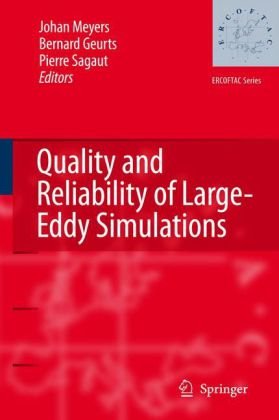

Most ebook files are in PDF format, so you can easily read them using various software such as Foxit Reader or directly on the Google Chrome browser.
Some ebook files are released by publishers in other formats such as .awz, .mobi, .epub, .fb2, etc. You may need to install specific software to read these formats on mobile/PC, such as Calibre.
Please read the tutorial at this link: https://ebookbell.com/faq
We offer FREE conversion to the popular formats you request; however, this may take some time. Therefore, right after payment, please email us, and we will try to provide the service as quickly as possible.
For some exceptional file formats or broken links (if any), please refrain from opening any disputes. Instead, email us first, and we will try to assist within a maximum of 6 hours.
EbookBell Team

5.0
60 reviewsComputational resources have developed to the level that, for the first time, it is becoming possible to apply large-eddy simulation (LES) to turbulent flow problems of realistic complexity. Many examples can be found in technology and in a variety of natural flows. This puts issues related to assessing, assuring, and predicting the quality of LES into the spotlight. Several LES studies have been published in the past, demonstrating a high level of accuracy with which turbulent flow predictions can be attained, without having to resort to the excessive requirements on computational resources imposed by direct numerical simulations. However, the setup and use of turbulent flow simulations requires a profound knowledge of fluid mechanics, numerical techniques, and the application under consideration. The susceptibility of large-eddy simulations to errors in modelling, in numerics, and in the treatment of boundary conditions, can be quite large due to nonlinear accumulation of different contributions over time, leading to an intricate and unpredictable situation. A full understanding of the interacting error dynamics in large-eddy simulations is still lacking. To ensure the reliability of large-eddy simulations for a wide range of industrial users, the development of clear standards for the evaluation, prediction, and control of simulation errors in LES is summoned. The workshop on Quality and Reliability of Large-Eddy Simulations, held October 22-24, 2007 in Leuven, Belgium (QLES2007), provided one of the first platforms specifically addressing these aspects of LES.